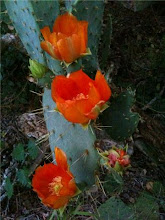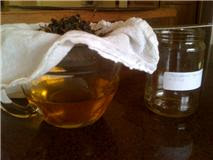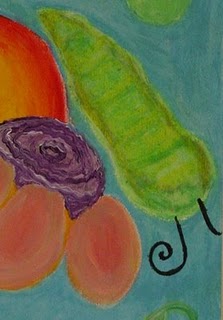 Many naturalized and native herbs, that's what!
Many naturalized and native herbs, that's what!Ahhh...the days are getting longer and the evenings are getting warmer. It's very nice to be able to enjoy some daylight in the evening time and to be able to wake up and fit in a walk before the day begins.
Weary of winter, I've started taking advantage of the warmer mornings and sunlight by heading outdoors to enjoy a morning walk before starting the work day. While on my walks, I can't help but look down on the earth... just to discover what herb and plant life has taken root.

It's also delightful to see the very first cheerful signs of Spring. Daffodils emerge from the earth with their sunny disposition as if telling us winter weary folks, "Hang in there! Cheer Cheer!Spring is near!" Daffodils are not for human consumption or application, I just love seeing the daffodil flowers as they greet me during my morning walks. Their visual benefit is worth noting.
I also love the moss growing along the ground covering the limestone rocks. The warmer temperatures and thick morning dew feed the moss the moisture it needs to thrive. The Hill Country is coming alive!
The earth, for the most part, is still a blank canvas of dead leaves and grasses. Evergreen Mountain Laurels and Mountain Cedar/Juniper trees add contrast, along with Agarita shrubs. I recently harvested many of the beautiful bluish/purple berries from the Cedar trees. I plan on making a household cleaner from them.
 Pictured here is the nature trail I walk along each morning.
Pictured here is the nature trail I walk along each morning. 
 The Agarita (Mahonia trifoliata) or Desert Barberry shrubs are showing signs of new life...tiny little reddish buds are clustered and nestled along the stems of the Texas native. In the next month or so, these little buds will bloom into tiny yellow edible flowers filled with sweet dewy nectar. Later, the pollinated yellow flowers will evolve into bright red edible berries. These berries can be picked and eaten directly off the shrub or collected and made into tincture or jam. Last year, I made a tincture from them and added them to one of my lotions. (To date, I think this gave one of my lotion recipes a secret advantage). The flowers can be collected and added to honey for a lovely and unique way to enhance your daily honey.
The Agarita (Mahonia trifoliata) or Desert Barberry shrubs are showing signs of new life...tiny little reddish buds are clustered and nestled along the stems of the Texas native. In the next month or so, these little buds will bloom into tiny yellow edible flowers filled with sweet dewy nectar. Later, the pollinated yellow flowers will evolve into bright red edible berries. These berries can be picked and eaten directly off the shrub or collected and made into tincture or jam. Last year, I made a tincture from them and added them to one of my lotions. (To date, I think this gave one of my lotion recipes a secret advantage). The flowers can be collected and added to honey for a lovely and unique way to enhance your daily honey.  Another herb I notice on my walk is Vervain. The leaves are healthy and dark green, not the light bright green you see in Cleavers. Lavender colored flowers are emerging on the Vervain. Right now, there is more green than purple/blue flowers, but soon - there will be fields of purple/blue flowers with a bit of green in between. I can't wait! It is said if you want to collect Vervain to make tincture, to collect the areal parts prior to blooming. So to me, this would be the time when a lot of the vital elements of the plant are in the leaves prior to placing that energy into the blossoms.
Another herb I notice on my walk is Vervain. The leaves are healthy and dark green, not the light bright green you see in Cleavers. Lavender colored flowers are emerging on the Vervain. Right now, there is more green than purple/blue flowers, but soon - there will be fields of purple/blue flowers with a bit of green in between. I can't wait! It is said if you want to collect Vervain to make tincture, to collect the areal parts prior to blooming. So to me, this would be the time when a lot of the vital elements of the plant are in the leaves prior to placing that energy into the blossoms.  Also along my walk, I encounter Texas Persimmon. Right now, the tree is bare - only grayish branches and twigs with specs of lichen here and there. The leathery leaves have not yet emerged. Later in the summer, this native tree will bear a small dark fruit, almost black in color The fruit is edible; however, the fruit is so small and filled with seeds, it makes it more of a novelty than a food staple. The birds love them and that's good enough for me.
Also along my walk, I encounter Texas Persimmon. Right now, the tree is bare - only grayish branches and twigs with specs of lichen here and there. The leathery leaves have not yet emerged. Later in the summer, this native tree will bear a small dark fruit, almost black in color The fruit is edible; however, the fruit is so small and filled with seeds, it makes it more of a novelty than a food staple. The birds love them and that's good enough for me.  Next, I see the Rosemary plant I cultivated from a cutting. As I see the large globe like shrub, I feel a sense of pride as I helped create this beautiful focal point on my walk. I often ask of this plant when I'm cooking and take the fresh sprigs to infuse soups and chicken dishes. This plant gives and gives and even in winter, proves to be a beautiful addition to the garden. Rosemary was once carried in pockets and often sniffed to awaken the mind and to clear the nose of bad smells in times where plagues filled the air with odor. It was also said to be worn as a crown around the head to keep warriors alert and vigilant.
Next, I see the Rosemary plant I cultivated from a cutting. As I see the large globe like shrub, I feel a sense of pride as I helped create this beautiful focal point on my walk. I often ask of this plant when I'm cooking and take the fresh sprigs to infuse soups and chicken dishes. This plant gives and gives and even in winter, proves to be a beautiful addition to the garden. Rosemary was once carried in pockets and often sniffed to awaken the mind and to clear the nose of bad smells in times where plagues filled the air with odor. It was also said to be worn as a crown around the head to keep warriors alert and vigilant. Next, I see Mullein. I’ve really been enjoying watching the Mullein grow. I have to say, these herblings are my favorite to visit. As the leaves come in the plant takes on more of a rosette/cabbagy look. The leaves are thick and soft. I am looking forward to harvesting the leaves and flowers. I'll infuse the leaves in oil to add softness and smoothness to salves and lotions. I'll infuse the flowers to have on hand for mild ear aches.
Next, I see Mullein. I’ve really been enjoying watching the Mullein grow. I have to say, these herblings are my favorite to visit. As the leaves come in the plant takes on more of a rosette/cabbagy look. The leaves are thick and soft. I am looking forward to harvesting the leaves and flowers. I'll infuse the leaves in oil to add softness and smoothness to salves and lotions. I'll infuse the flowers to have on hand for mild ear aches.  Cleavers has been taking hold and really succeeds in areas that get plenty of moisture and sunlight. At this stage, Cleavers is still in a growth spurt. Cuttings can be sampled and infused in hot water for lymphatic cleansing; however, I'm waiting for the Cleavers to double in size before I harvest the aerial parts and infuse in oil to make my favorite "Healing Hands" lotion. There's a big difference in fresh cleavers infusion versus dried cleavers infusions. Much of the vital elements of the plant is still in tact when fresh.
Cleavers has been taking hold and really succeeds in areas that get plenty of moisture and sunlight. At this stage, Cleavers is still in a growth spurt. Cuttings can be sampled and infused in hot water for lymphatic cleansing; however, I'm waiting for the Cleavers to double in size before I harvest the aerial parts and infuse in oil to make my favorite "Healing Hands" lotion. There's a big difference in fresh cleavers infusion versus dried cleavers infusions. Much of the vital elements of the plant is still in tact when fresh.Also coming up, but not pictured, are Dandelion and Plantain. The eath is covered with these herbs. I'm allowing Dandelion to take hold in one of my garden beds so I can harvest the root in the future. The newer leaves can be eaten for a fresh and nutrient rich addition to your meals. Plantain leaves are small and fresh. I will wait until the leaves are larger before I harvest them.
Well, this is the update on what's growing in the Texas Hill Country.
I'm off to the garden...it's 80 degrees and I have much to do!
I wonder what herbs are growing where you are. Send me an email or reply to this post and let me know.
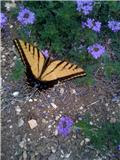
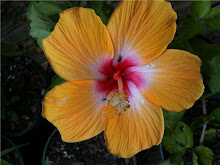








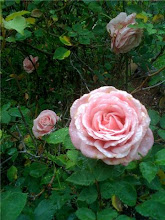
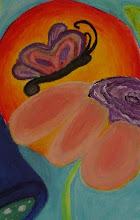
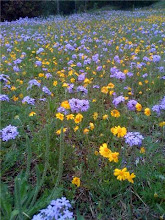+and+wildflowers+loving+the+field.jpg)

